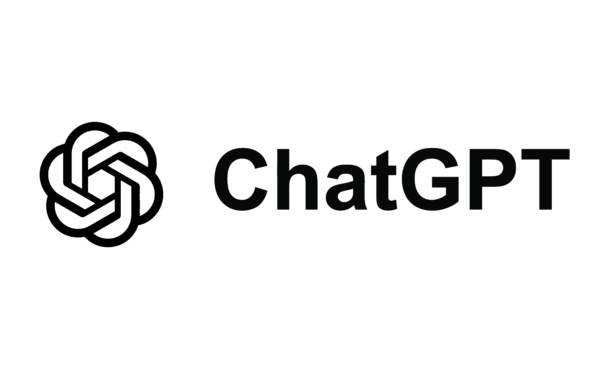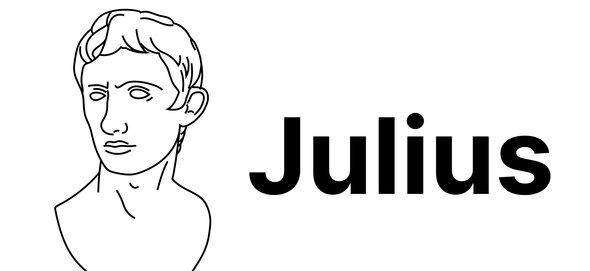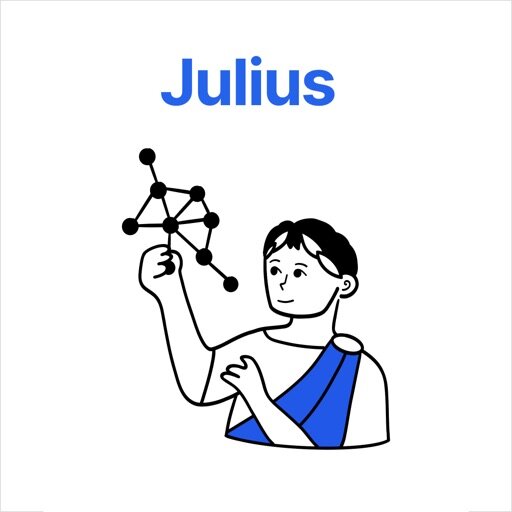May 7th, 2025
Julius AI vs. ChatGPT: What’s Better for Data Analysis and You?
By Connor Martin · 5 min read


Finding the right data analysis tool for your needs can be tricky. You most likely need a tool that can handle multiple datasets, producing sleek and meaningful visualizations from which you can glean actionable insights.
Both Julius AI and ChatGPT allow you to analyze data in various data formats. But which is better at it, and how do you know which one to choose? Welcome to our in-depth guide to Julius AI vs. ChatGPT, helping you pick the right tool for advanced data analysis.
Key Takeaways
• Julius AI and ChatGPT both use natural language processing, but Julius AI is purpose-built for fast, automated data analysis and visualization.
• ChatGPT offers broad capabilities like content generation and coding, while Julius AI focuses specifically on turning raw data into actionable insights.
• Choosing the right tool depends on your needs—Julius AI is ideal for streamlined data tasks, while ChatGPT suits users looking for general versatility.
Overview of Each Tool
Let’s learn a little more about each of these innovative tools.

ChatGPT
OpenAI’s ChatGPT is, arguably, one of the most exciting AI innovations of the last few years. Bursting onto the scene in November 2022, it quickly became one of the fastest-growing apps in history. The ability to converse with an AI application utilizing natural language processing and generation (NLP/NLG) was new to many and led to a swift rise in the adoption of generative AI.
ChatGPT can do just about anything, from solving math equations to writing code to data analysis. However, it’s not designed specifically for data analysis and visualization, so data analysts and statisticians may find its usefulness limited. Most visualizations will require manual formatting or multiple follow-up prompts.

Julius AI
Julius AI is an AI tool for all types of data analysis, helping everyone from skilled statisticians to academics and business data managers visualize data with ease. Julius AI’s user interface uses NLP/NLG, just like ChatGPT, but specifically for asking questions about your datasets.
Julius AI specializes in automatically producing charts and other visualizations from raw data with very little user input. You don’t need to be technically minded to use Julius AI to gain summaries and insights from your data sets.
Feature Comparison
Let’s compare Julius AI to ChatGPT by focusing on the features and functionality of both solutions.
Data Input and Formatting
Both tools allow you to use different data files and file types to input datasets. Data formats for ChatGPT include JSON, .pdf, .xls/.xlsx, and .csv. Julius AI supports all these plus .parquet, .feather, .db, .sqlite, .sav, Markdown text files, and various image file formats.
Data Visualization
Whether you work in statistical analysis or sales, data visualizations help you glean insights from your datasets more quickly. Julius AI is designed to automatically produce sleek visuals and summaries, making data insights accessible to all. ChatGPT can produce charts, but requires spreadsheets of data to be manually formatted in very specific ways in order to provide this functionality.
Automation and Insights
Julius AI is all about quickly and automatically producing visuals and drawing insights from data. Julius AI’s automated approach means users can upload raw data and quickly receive summaries, charts, and trends without extensive manual prompting. This speeds up the discovery process significantly, especially for teams or individuals who need immediate, accurate insights.
ChatGPT can assist with analysis, but typically requires more hands-on guidance to reach similar results. ChatGPT will follow your prompts, but it isn’t a data analysis-specific tool, so you have to be careful about the language and questions you use.
Natural Language Interaction
Both tools support NLP/NLG and offer an excellent conversational experience. Because Julius AI is designed with data analytics in mind, your queries will always be taken in a data analysis context for smarter insights.
Customizability
Julius AI offers intense customizability, allowing you to choose exactly how you want your data to be presented. ChatGPT offers minimal customization.
Scope of Capabilities
ChatGPT data analysis is fairly basic and only covers limited file formats. However, it has additional capabilities such as content generation, which make it an appealing choice for many users. Julius AI is more focused on deeper data analytics features, but doesn’t have the broad AI capabilities of ChatGPT.
Pros and Cons: ChatGPT vs. Julius AI
Need a quick answer to the Julius AI vs. ChatGPT debate? Here are our pros and cons for each tool.
ChatGPT
Pros:
• Exceptionally versatile
• Assists with data tasks, code, writing, research, and more
• Offers flexible language-based interfaces
• Ideal for users with a wide range of needs
Cons:
• Requires more effort to analyze and visualize structured data
• Outputs may need to be copied and pasted elsewhere for visualization
• No built-in charts or dashboards, unless integrated with plugins or tools
Julius AI
Pros:
• Built specifically for working with data
• Auto-generates charts, summaries, and insights – Julius AI takes very little technical expertise to get the most out of it
• Minimal prompting required
• Streamlined and user-friendly – most users find Julius AI easy to use and intuitive.
Cons:
• Limited to data-related use cases
• Less flexible outside of analytics
• Requires an internet connection
How to Choose the Right Tool for You
With multiple AI models and data analysis tools to choose from, it’s critical that you know how to pick the right tool for your needs. If you need a tool that does more than simply analyze, manipulate, and visualize data, ChatGPT would be your best choice. ChatGPT answers questions on numerous topics (although it has to be fact-checked for hallucinations) as well as generating text, images, and helping with content ideation.
Julius AI is far more use case-specific than ChatGPT for those needing a dedicated data analysis tool. You can quickly clean and sort raw data, gaining insights quickly by simply asking questions via the natural language interface.
Consider your needs, how much data you’ll need to analyze, and the data formats you’ll be using. Also ask yourself whether basic data analysis features will suffice or if you need something that can handle complex queries. Those factors can help drive your choice of data analysis tool.
Want an AI Built Just for Data? Try Julius AI for Free Today
Julius AI vs. ChatGPT – if you need a tool specifically for data analysis, there’s no contest. Get started for free and discover how easy Julius AI makes it to turn your raw data into stunning visuals and meaningful insights.
Frequently Asked Questions (FAQs)
Is Julius AI the same as ChatGPT?
No, Julius AI and ChatGPT are different tools built for different purposes. While both use natural language processing (NLP) to interact with users, Julius AI is specifically designed for data analysis and visualization, whereas ChatGPT is a broader conversational AI that handles a wide range of tasks beyond data.
Is there any AI stronger than ChatGPT?
The answer depends on what you need the AI to do. While ChatGPT is one of the most versatile conversational AIs, specialized tools like Julius AI can outperform it in specific areas such as automated data analysis and visualization, offering faster, more tailored results for those use cases.
What is currently the best AI?
There’s no one-size-fits-all "best" AI—different tools are better suited for different tasks. ChatGPT leads in general conversation and content generation, while Julius AI stands out for users needing dedicated, automated data analysis and easy-to-use data visualization features.
What is ChatGPT best for?
ChatGPT excels at natural language conversations, content generation, brainstorming ideas, answering general questions, and assisting with a wide range of creative and technical tasks. However, its data analysis capabilities are more basic compared to platforms built specifically for that purpose.
What is Julius AI best for?
Julius AI is best for users who need a powerful yet easy-to-use tool for analyzing raw datasets, automatically generating charts, and producing meaningful insights, without requiring extensive technical knowledge. It's purpose-built to streamline data analysis and visualization through natural language interaction.
